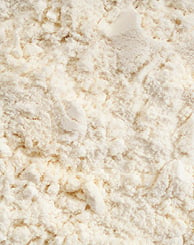Food processing always requires a high level of sanitation, as outlined in our blogs Reducing Risk with 3-A Authorization, Leaning In: Safety in Cleaning Mixers, and Top 3 Considerations in Choosing a Mixer for Food Processing.

What’s different about perishables is the risk of bacterial contamination.
Following are the top tips for getting that extra edge when mixing and processing perishable food products.
- Maintain only 3-A Authorized equipment. The details of what 3-A mean can be found in our blog, Reducing the Risk with 3-A Authorization. But note this—anything other than 3-A Authorization is simply a play on words.
- While the minimum finish for food is 120 grit on paddles and troughs, for perishables you may want to go up to 150 or even 180 to make sure that there is absolutely no room for error when cleaning the mixers.
- Clean mixers between every batch. The key to keeping bacteria out is reducing the exposure time of the materials and mixes. Cleaning after every batch means every molecule of the incoming batch is fresh and no contamination can remain between batches. This means that your mixer must be easy to clean. Find out more about that in the infographic: Leaning In
- Cooling materials or cooling jackets. For some mixes, keeping the mixture cool is important during processing. To keep a cool mix, you can use cooling jackets or injections of cool air such as CO2 into the mixer. Temperature control can be an important factor in limiting any type of bacterial growth.
- Refrigerated rooms. More commonly, manufacturers will keep the entire facility cool enough to prevent contamination. After all, materials go from one machine to another, so ambient temperature reduction can be the most effective method.
- Reduce the discharge pocket space. In addition to having removable discharge valve, choosing a configuration with no or minimal discharge pocket will make cleaning easier and reduce the amount of material that can get clumped up near the discharge area.
- Choosing the right trough shape. Typically, a J-trough or semi-cylindrical trough will create millimeters of tolerance between paddles and the trough before the paddles reach the material being mixed, virtually eliminating residue material on the trough.
- Microbial reduction through thermal processing. Microwave thermal processing can provide sterilization and microbial reduction while mixing food materials. Microwave provides faster and superior results for a wide variety of food products. Check out WaveMix for more information.
Keeping these tips in mind is the first step towards choosing the right equipment for your perishable food products. Work in tandem with the experts to make sure your configuration meets the specifications you need for your application.